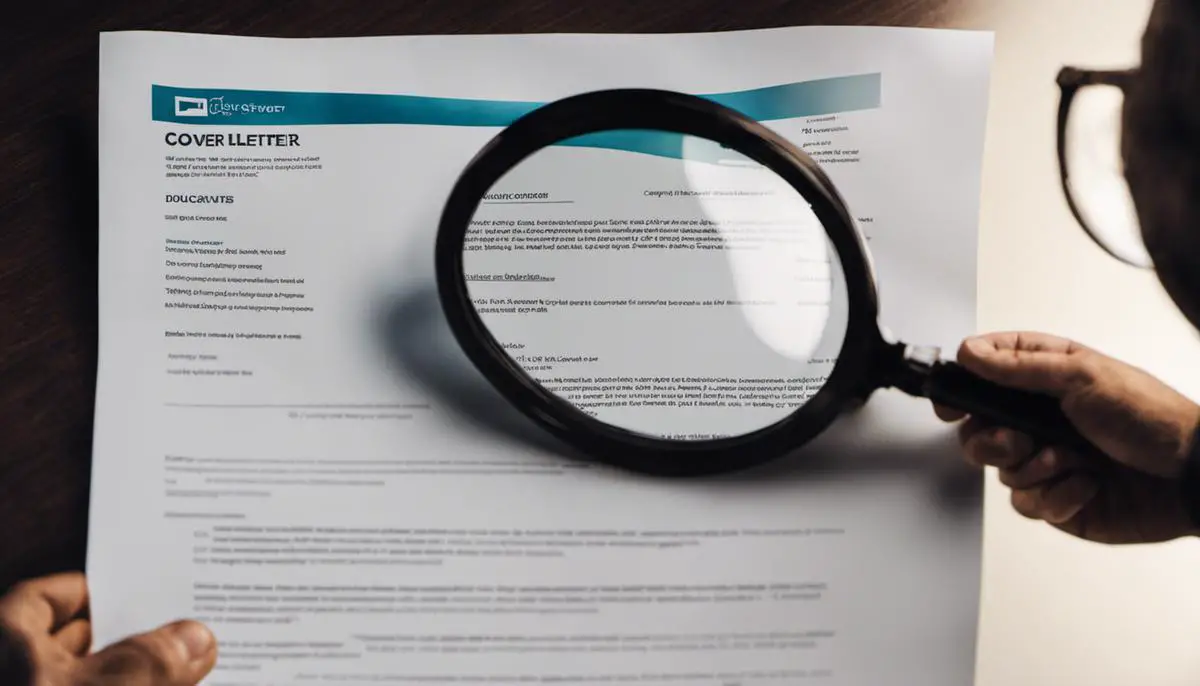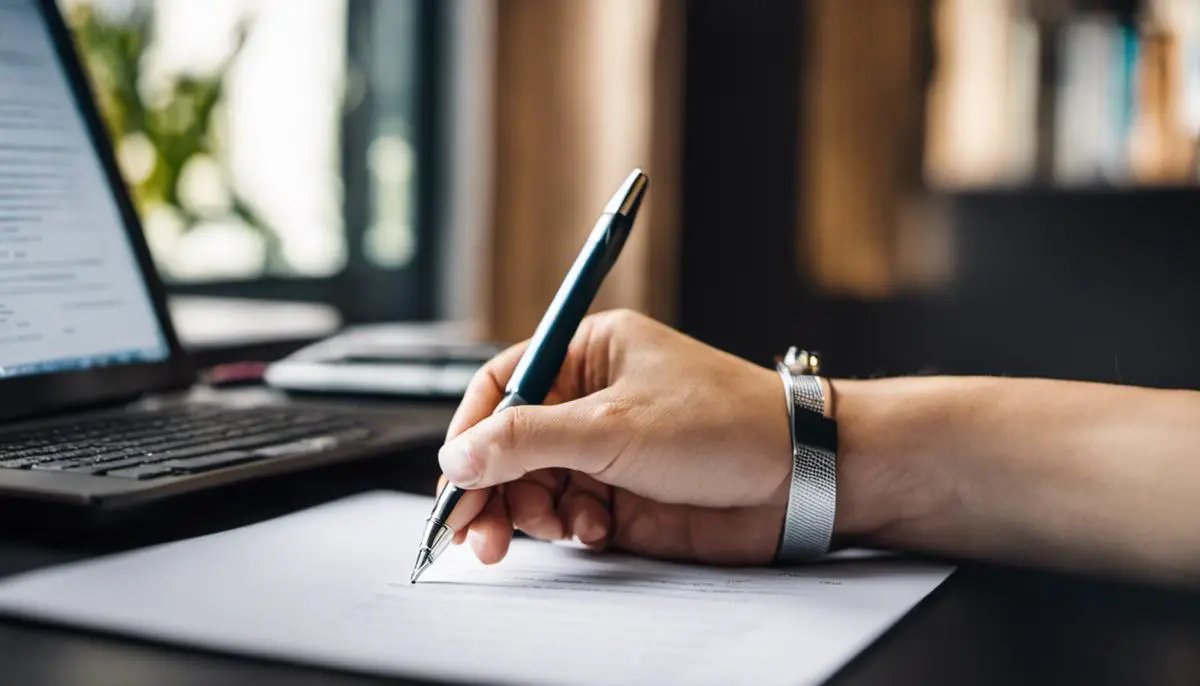In the competitive arena of job hunting, every element of an application must be polished to perfection, and this includes the cover letter. While resumes summarize your qualifications, it’s the cover letter that tells your story, giving potential employers an insight into who you are beyond your credentials. This piece focuses on understanding the purpose and significance of a cover letter, the standard yet critical mistakes often made, and the effective editing strategies that can transform your cover letter into a persuasive, engaging introduction of your strengths and abilities. By mastering these aspects, job seekers can significantly increase the odds of landing coveted interviews.
Understanding the Purpose of a Cover Letter
Understanding the Importance of a Cover Letter
A cover letter is a professional letter of introduction that is typically attached to a job applicant’s resume. It serves as the candidate’s first opportunity to present themselves to potential employers, outlining their skills, qualifications, and experience that make them the ideal fit for the job. This written document creates a first impression, and its quality often affects a job seeker’s chances of being called in for an interview. A well-written cover letter can significantly increase the likelihood of securing a job, thereby enhancing one’s professional success.
The Purpose and Significance of a Cover Letter
The primary purpose of a cover letter is to provide a succinct summary of an applicant’s qualifications and to determine their suitability for the job. It also offers a platform for candidates to sell themselves, highlighting their unique attributes and expertise that align with the job description. In essence, a cover letter is an extension of a resume, offering more detailed insights into an applicant’s career background and future aspirations. Therefore, how well one edits their cover letter can potentially influence the outcome of their job application process.
Elements and Structure of a Strong Cover Letter
There are key elements and a specific structure that every strong cover letter should possess, both to maintain professionalism and improve efficiency. These elements include the heading, salutation, introduction, body paragraphs, and a conclusive statement.
- The heading should contain the applicant’s contact details, the date, and the employer’s contact information.
- The salutation addresses the recipient. When the name of the hiring manager is known, it should be used; otherwise, a general greeting like “Dear Hiring Manager” is acceptable.
- The introduction should clearly state the position the candidate is applying for, where they found the job posting, and a succinct statement on why they’re a strong fit for the role.
- The body of the cover letter is where the applicant highlights their qualifications, key achievements, and skills, drawing strong connections to the job description. It’s essential to keep this section concise and focused.
- The conclusive section reinforces the candidate’s interest in the job, provides any necessary follow-up details, and expresses gratitude for the hiring manager’s time and consideration.
Editing Strategies to Optimize Your Cover Letter
Effective editing strategies are crucial to produce a high-quality cover letter. These strategies involve paying meticulous attention to spelling, grammatical structure, punctuation, format, and the tone of the language employed.
Grammatical accuracy helps the employer understand the information provided and demonstrates the applicant’s professionalism and attention to detail. Punctuation errors and typos should be thoroughly addressed, as these can distract from the content and potentially portray the applicant as careless.
The tone of the letter should strike a balance between professionalism and personalism, showing respect for the reader while still expressing the applicant’s personality.
An optimal format is important. Information should be presented in order of importance, with the most vital details appearing first. This includes the candidate’s most relevant skills, responsibilities, and achievements.
Among the most critical editing strategies is tailoring the cover letter to the specific job. Instead of using a generic letter for all applications, each cover letter should be personalized to match the specific job requirements. This demonstrates an understanding of the role and a genuine interest in the company.
Finally, reading aloud can help detect any awkward phrasing, unnecessary words, or areas that lack clarity. It can also be helpful to have another person review the letter for additional feedback.
The significance of a well-crafted cover letter in the job application process is immense. This pivotal document provides prospective employers with a snapshot of your skills and experiences, distinguishing you from other applicants. Editing and structuring this document with meticulous attention are therefore key to optimizing your chances of snagging the desired interview invite.

Common Mistakes in Cover Letters
Avoiding Common Mistakes in Cover Letters
One pitfall that job seekers often stumble into is neglecting to conduct a thorough review of their cover letter. This lapse can lead to grammatical errors, spelling slip-ups, punctuation inconsistency, and awkward sentence construction – all of which may discourage potential employers. A CareerBuilder study reveals that over half of submitted resumes are tainted with typos; the same, no doubt, can be assumed about cover letters. As such, repeated revisions and careful editing are essential to ensuring your cover letter is devoid of such blunders.
The Pitfall of Incorrect Formatting
Another widespread error in cover letter writing is incorrect formatting. The usual format of a cover letter should follow a three-paragraph system; introduction, body, and conclusion. The body of the cover letter should be concise and should not exceed more than two paragraphs. The letter should also be appropriately spaced with the right margins. Poor formatting can make the cover letter hard to read and less attractive to recruiters.
Usage of Generic Phrases
Many cover letters are plagued with the use of generic phrases such as “I’m a hard worker” or “I’m a team player.” While these qualities are important, employers prefer to see specific examples that demonstrate these skills rather than just hearing you assert them. Applicants should replace these generic terms with results-driven accomplishments that outline their skills. According to a study by BrightSide Resumes, 77% of recruiters prefer candidates to show how they can contribute to the company rather than just stating their qualities.
Failing to Address Job Requirements
One of the main purposes of a cover letter is to show how your expertise and experience make you the ideal fit for the job. Failing to address the specific requirements stated in the job description is a deal-breaker for most employers. This is where customization comes into play. Each cover letter should be tailored to align with the job you are applying for, showing recruiters that you have done your research about the company and the role. A study by Pongo Resume discovered that 48% of hiring managers reject cover letters that don’t include specific job-related skills.
Case Studies of Poorly-Written Cover Letters
To fully comprehend the impact of these errors, let’s consider two case studies of poorly written cover letters. In the first case, an applicant for a Marketing Manager job submitted a cover letter full of typos and generic phrases without mentioning his past marketing successes or how he could contribute to the company’s goals. The hiring manager disregarded his application due to these glaring flaws despite his impressive resume.
Another poor example is a cover letter submitted for an Editor position. The letter was poorly formatted and didn’t address any of the specific requirements stated in the job description, giving the impression that the applicant may not have thoroughly read or understood the role. This cover letter was disqualified even though the applicant had a good work history.
Securing an interview for a dream job takes more than just specialized professional qualifications. A poorly crafted cover letter can prevent even the most competent candidate from securing an interview invitation. For this reason, it’s absolutely essential to learn the art of effective cover letter writing, taking deliberate steps to avoid common pitfalls and continually refine your skills.

Effective Strategies for Editing a Cover Letter
Strategic Process for Cover Letter Editing
A crucial part of these refinements is the process of editing your cover letter. Begin by thoroughly examining the content of your letter to ensure your understanding of the job description and the alignment of your cover letter to the role you’re seeking. Remember, your cover letter shouldn’t simply repeat the contents of your resume. Rather, this space provides you with an opportunity to skillfully connect your experiences and capabilities to the specific requirements of the job, making it clear why you constitute the best fit for the position.
Honing Language and Tone
Language and tone are crucial elements of an effective cover letter. Use clear, concise language—avoid complex jargon and verbose explanations. Strive for a professional yet conversational tone, and let your personality shine through. Make sure the tone aligns with the company’s values, culture, and communication style.
Proofreading for Errors
Rid your cover letter of grammatical and spelling errors. This might seem obvious, but even minor mistakes could cast doubts on your attention to detail. Consider using online proofreading tools or having someone with strong language skills proofread your cover letter.
Structural Check
Next, evaluate the overall structure and organization of your cover letter. It should have an engaging opening paragraph where you directly address the reader. This is followed by main body paragraphs where you discuss your qualifications and finish with a conclusion expressing your enthusiasm for the role and an invitation to further discuss your qualifications.
Tailoring Content to Job Description
Align your skills and experiences specifically to the requirements of the job description. Use the exact phrases and keywords from the job posting to draw clear parallels between the role and your qualifications.
Highlighting Key Achievements
In your cover letter, make sure to showcase your most significant achievements. It’s not enough to simply list your duties and responsibilities. Instead, demonstrate how you made a difference in your previous roles, using quantifiable evidence like revenue generated, or a percentage increase in customer satisfaction.
Ensuring Consistency with Your Resume
Your cover letter and resume should complement, not contradict, each other. Make sure the dates of employment, job titles, and major achievements are consistent across both documents.
Leveraging Active Voice
Use active voice to create impactful sentences. Active voice assigns the action directly to the subject of the sentence, making your message clearer and more forceful. For instance, instead of saying, “A new marketing strategy was developed by me,” use, “I developed a new marketing strategy.”
Ensuring the Use of Action Verbs
Use action verbs to begin your sentences. Words like ‘achieved,’ ‘generated,’ ‘spearheaded,’ etc. pack more punch and reflect a proactive attitude.
Remember, your cover letter is an opportunity to make a compelling case for your candidacy. By taking the time to edit carefully, you maximize your chances of making a great first impression.

The beautifully penned cover letter is not a mere formality but a strategic tool designed to make an impactful first impression. As you navigate your job hunt, bear in mind that your cover letter can serve as valuable real estate to articulate your value proposition and align it with the employer’s needs. It might be tricky to avoid the common pitfalls and to refine your draft into a compelling narrative. However, with the understanding and editing strategies enumerated in this discourse, you’ll be well-equipped to create a standout cover letter that not only encapsulates your professional identity but is also finely tailored to your desired role. Your cover letter is no longer just an enclosure—it is your ticket to the job interview, and ultimately, your dream job.


Leave a Reply